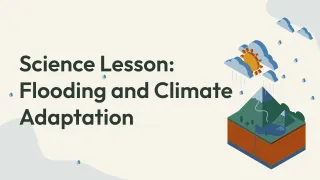Active banners: 0 Visible banners: 0
Studies of Endangered Species Stress Transboundary Conservation
Provided by: American Museum of Natural History |Published on: March 30, 2023
Articles/Websites
9101112AP
Synopsis
- This article describes recent scientific research and discusses the need for bordering nations to work together to protect biodiversity, especially as endangered species' ranges shift and become fragmented due to climate change.
- Examples of situations where this would be necessary are presented in different journal articles (linked in the article), such as the protection of endangered monkey and tree species along the China-Vietnam border.

Subjects: Social Studies, Biology
Authors: American Museum of Natural History
Region: Asia, Global
Languages: English
Teaching Materials
Positives
- The article presents a short summary of the research related to transboundary conservation of endangered species, while also linking to the full scientific journal with eight available articles on the topic.
- It highlights the importance of cooperation between nations.
- Charismatic animal and plant species are highlighted in many of the scientific journal articles.
Additional Prerequisites
- Learners that read the journal articles should be familiar with the structure of a scientific journal article and how scientific research is presented in a peer-reviewed fashion.
- Learners should understand some of the basic threats that climate change poses to habitats and other species.
Differentiation
- Consider having students choose one of the highlighted endangered species to research on their own before tackling any of the scientific journal articles related to the conservation issues they face.
- When reading any scientific journal article at the high school level, major reading scaffolds are often necessary to help make the high level text more accessible.
- Scaffolds that may be helpful when reading journal articles include chunking, think alouds, previewing vocabulary, and group analysis of graphs.
- Have students research a local species that is endangered and discuss how its range may fragment or shift due to climate change.
- If teachers choose to utilize the journal articles in addition to the short summary, there are excellent opportunities to build scientific literacy through maps, graphs, diagrams, and domain-specific language.
Scientist Notes
Teaching Tips
Standards
Resource Type and Format
About the Partner Provider

American Museum of Natural History
The American Museum of Natural History is one of the world’s preeminent scientific and cultural institutions. Since its founding in 1869, the Museum has advanced its global mission to discover, interpret, and disseminate information about human cultures, the natural world, and the universe through a wide-ranging program of scientific research, education, and exhibition.
All resources can be used for your educational purposes with proper attribution to the content provider.

-240.webp)

-240.webp)
-240.webp)
-240.webp)
-240.webp)
-240.webp)
-240.webp)
-240.webp)
-240.webp)
-240.webp)
-240.webp)


